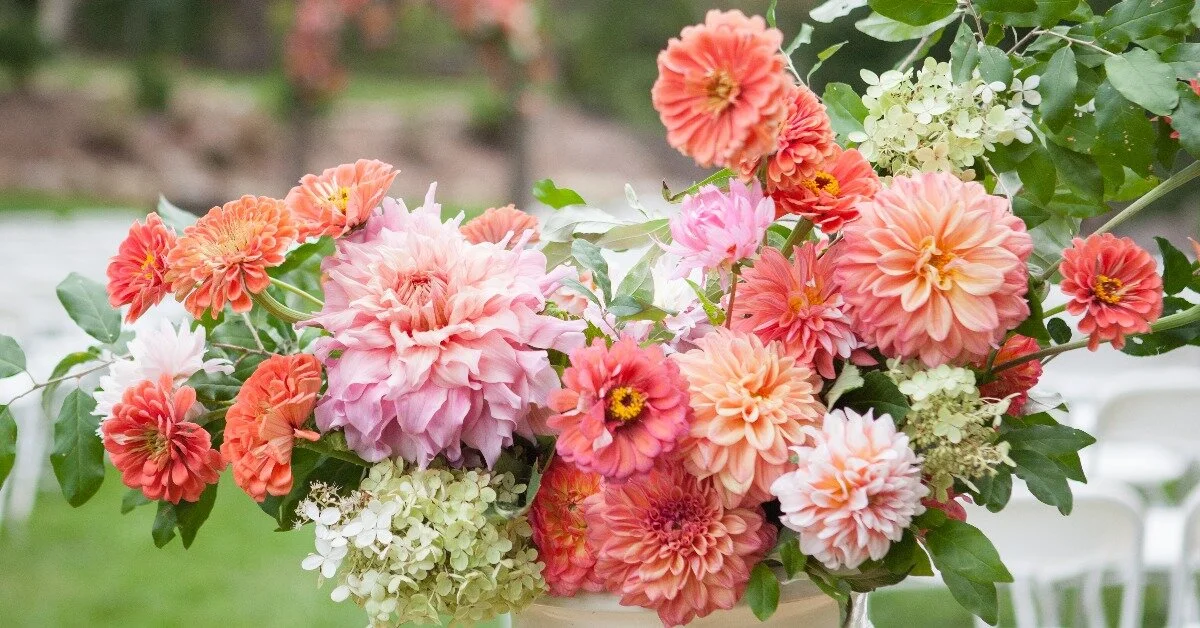When it comes to dreamy Spring flowers, all roads lead to Holland. Living in a subtropical climate can put a damper on growing these blooms—but it can be done!
All tagged growing zones
When Florists Become Flower Farmers with Days of Dahlia
Days of Dahlia is a flower farm and floristry design studio based in South West Scotland run by the mother and daughter team, Lauren and Louisina. We’re chatting about what it looks like for a floral designer to turn flower farmer! You’ll hear tips for florists and farmers alike on growing cut flowers.
Running a Successful Side Hustle: Cut Flower Farms
Jeri Irby and her husband both have full-time jobs that they love and have a blooming (no pun intended!) cut flower farm that they run as their side hustle. In this episode, hear tips on how to balance both!
Growing Flowers Can Combat Climate Change: Here's How
Discover crucial regenerative farming practices for flower farmers and hobby growers alike. If you’re a farmer-florist or even a home gardener, learn how you can help combat climate change in your regular growing practices.
Business Model Highlight: Growing Together with Meadow Farm Florals
As a small-scale flower producer, Angela Hall of Meadow Farm Florals saw an opportunity to help others learn how to start growing flowers. A light bulb went off in her head. Why not do it "together"? That’s how Growing Together, Angela’s growing collective, was born.
Your Complete Guide to Growing Annuals That Bloom All Summer
A full, comprehensive guide with lists of annuals that produce flowers all season long (and are excellent for cut flower work)—including annuals that grow well in containers with full sun.
Productive Ideas for Flower Farmers to Fill Rainy Seasons
As a flower farmer, there is meaningful work to be done in off seasons—including self-care. Discover practical rainy and off season tips from one flower grower in North Florida.
How to Grow Pampas Grass: A Guide for Flower Growers
If you’re a cut flower grower (or even a micro flower farmer!) wondering if you can get in on the pampas grass trend and earn additional revenue off this popular ornamental grass, this guide is for you!
Growing Garden Roses as a Summer-Long Staple for Floral Design
If you’re wondering about the steps, tips, and tricks to growing garden roses that are robust and healthy for cut flower use and floral design work, look no further!
4 Things You Need to Know as a Beginning Flower Farmer
Are you a new flower farmer or looking to start a flower farm sometime soon? Learn 4 crucial tips to keep in mind when starting a cut flower farm.
Growing in Warm Climates with Petals, Ink
In this episode, hear from Gretchen O’Neil of Petals, Ink. Discover how she navigates floral business transitions and growth. Located in Texas, Gretchen knows a thing or two about growing flowers in warm climates. Tune in to hear some helpful tips on growing beautiful blooms in hot temperatures!
Tips for Growing Flowers in Zone 9a
Looking for tips for growing flowers in zone 9a? Discover tips and tricks for growing plants in zone 9a, despite tricky rainy seasons, summer heat waves, and more.
6 Frost-Tolerant Flowers for May in Zones 6–7
In this article you’ll find 6 frost-tolerant flowers that do well for cut flower work (5 perennials and one vigorous self-seeding annual).
Quick Guide to Growing Hellebores
Blooming from December into early spring, they are a much-anticipated bloom, the first of the year here in Oregon. Hellebores like a shady position in the garden with well-drained soil. They love a well-prepared site, cultivated deeply for their long and fleshy roots, about two to three feet deep and amended with rotten manure.
Best Practices for Flower Farming in New England
Flower farming in New England is not for the faint of heart. Blazing heat and humidity in the summer, frigid cold temperatures in the winter, wind, rain, snow—then throw in the occasional hail storm, hurricane or Nor’easter, and you know you need a resilient and determined personality (read: stubborn) to grow flowers professionally in New England. With a relatively short season in which to grow, season extension and succession planting are the keys to success, but learning to accept your zone and work within its natural cycles is also important. In this article, I will attempt to summarize some of the best practices for growing flowers in New England.















